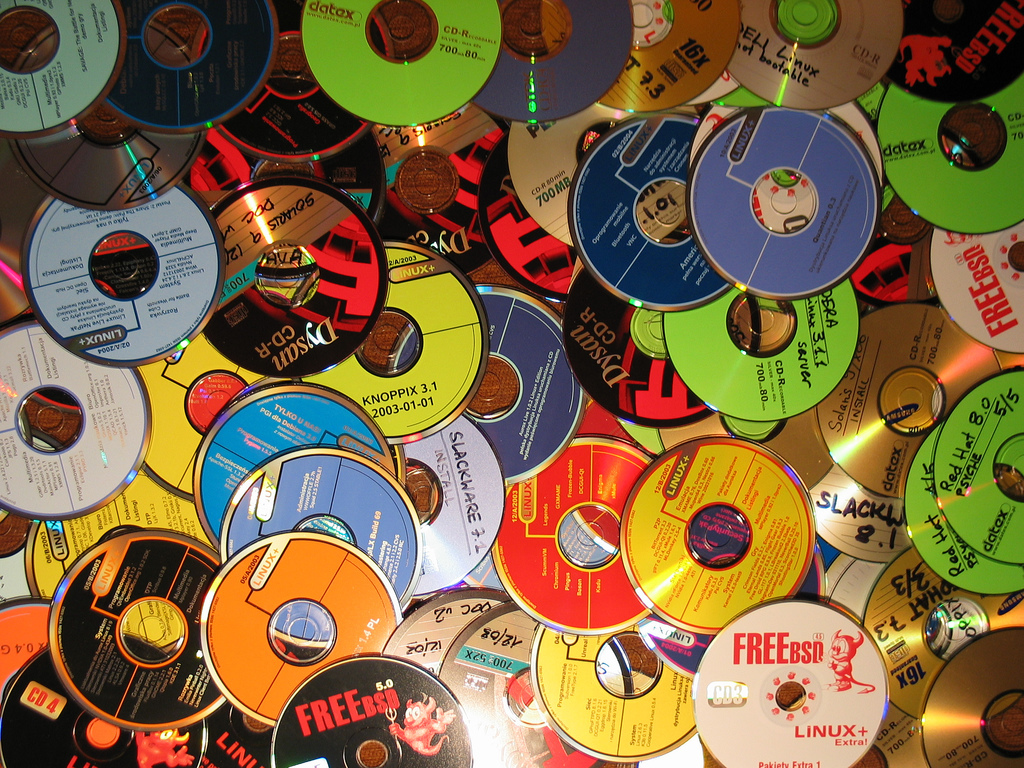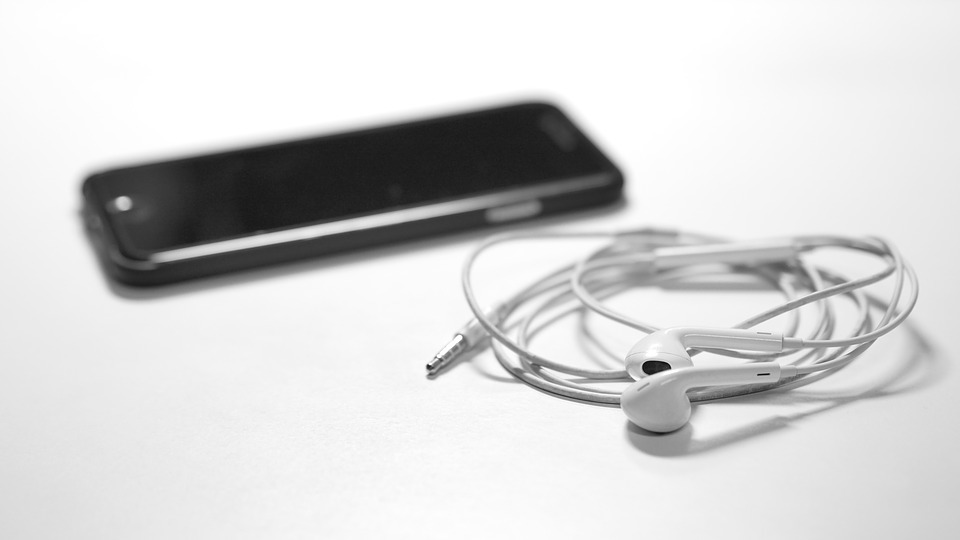The story of registering the sound in music

Back in the ancient society, the music was taught by memorizing the certain melodies. Then, in the Middle Ages, when the neum was invented in the church choirs’ environment, writing and memorizing melodies became slightly easier.
The early neum notation was the way of writing music by using the symbols that were similar to the way in which a choir director used his hands to direct the choir. One may consider the paper covered with neum as the first storage device for music. When the time passed, around the year 1000 the new kind of neum was developed.
The new neum notation, called neum in campo aperto (neum without the line), by vertically spreading the neums, contained the information how high or low the sound should be. While the time passed, the two lines were added – at first the red one and then the blue one.
The history of music storage devices
In the XI century Guido d’Arezzo started writing neums in the four different lines, so that it was easier for everyone to read how high the sound should be. However, the neums still did not emphasize how the rhythm of a certain choral should look like. At this time two types of neums were developed – in the XII century the roman one (nota quadrata; used till today to write the Gregorian chorals), and Goth neums (used between the XIII and the XV century). Both notations gave the basis for the today’s choral notation.
In the year of 1175 in the school in Notre Dame today’s notes were invented. The new notation enabled musicians to capture both, the actual sounds and the rhythm of a certain piece of music. However still, the only storage device was still the paper, which was a huge disadvantage. This is because if someone wanted to listen to some music, then that person had to be either n the right place within the right time, or had to learn how to read music and play an instrument.
Now, lets move forward to the year of 1877, when Thomas Edison invented the first device that was able to store and reproduce music. The device was called phonograph. It was based on the telegraph technology. First, the sounds that were stored as the points were captured on the cylinder shaped tinfoil. Then, based on what was captured, the wax cylinders were produced and put into the device. In the device, there were special metal stripes that were in the opposition, in which they could graze the sticking points on the wax cylinders. Because those grazed alternately the sticking points and the sole air, the sound was produced. After a while the phonograph was developed. At first, the wax cylinders were replaced with the metal ones, and then the device was redesigned and equipped with the replaceable cylinders, so that more music could have been stored and the music could have been more diverse.
Ten years later Emile Berliner invented a gramophone. It used the special discs, at first made of zinc, then glass glass, then stiff gum and in the final version – from shellac. The gramophone had a special needle that was put into the grooves that were present on the produced disc. The bottom of the grooves was not flat. Because of that, the needle was put into vibrations and then those vibrations were turned into a sound by the gramophone. The discs allowed storing more music than the cylinders, and could have been easily replicated. That enabled the phonographic industry to generate huge sales. It was also the first technology that enabled people to record the full songs.
The history of CD’s
Moving forward, in the year of 1948 the company called CBS–Columbia invented another device that could store the music – the vinyl disc. It used the same technology as the shellac discs. However, because the material was different, the sound’s quality was much higher. While CBS–Columbia’s CD was 33 rpm one, there was another company, called RCA, that produced a 45 rpm vinyl disc, which, according to their company, could record a better quality sound, because the speed in which the CD was played was higher. This lead to the “speed war” in the phonographic industry that resulted in gramophones being equipped with parts that could play both speed vinyl discs. That was the time when the recordings were divided into two categories – the singles and the albums. That was the first time when the sales in the phonographic industry were impacted by the technology.
Along with the vinyl discs, in 1963, another music storage device was invented by the Philips Company. It was the cassette that contained the magnetic tape. Although the first cassettes were not really good, they got much better quality in the 1970s and revolutionized the work in the studio. The magnetic tape is the tape covered with metal powder. By using special electromagnets the music was recorded on the tape. Then, during editing process, the tape with music was cut out of the tape and linked with the adhesive tape. That made the recording process much quicker.
In the end oh the year of 1982 the compact CD that is well known and commonly used these days had its debut in Europe and in Asia. In the United States it happened a year later. The CD was a result of joined work of the companies called Philips and Sony. The compact CD uses the digital technology, which led to the higher quality of sound recorded on that kind of disc. Moreover, the disc was smaller and harder. Those qualities made it easier to store and sale. Moreover, because of smaller sizes, the stores could order more CDs, which resulted in bigger sales. Apart from that, the CD was also easier to listen to not only because of its smaller sizes, but also because of the fact that it contained 80 minutes of consecutive music on it’s one side, instead of just sixty minutes on both sides (30 minutes on each side), as it used to be registered at the vinyl discs. Moreover, the new format generated the bigger sales for the phonographic industry for over 20 years. This is because people wanted to get their music in the new technology, and some CDs, due to the fact that they could contain more music than the vinyl discs, had some bonus tracks.
CDs use the PCM code to save the recording on them. They contain four layers: polycarbonate layer, shiny layer, a layer of lacquer, and an artwork layer. A polycarbonate layer has the data encoded by using bumps. The shiny layer reflects the laser that is shot from the laser beam and then caught back by a sensor that converts it into the electronic data. A lacquer protects the shiny layer, while an artwork is screen printed on the top of the disc.
The CSs were the groundbreaking invention that enabled people to store the music as music files. The only step that had to be taken was registering the electronic data in order and storing it in the one file. After this step was taken, it opened the world of possibilities for storing the music.
Because of the development of the music storage devices, people are now able to listen to music everywhere they go. They can listen to it in the airplanes on the airplane’s computers, they are able to store music in their phones, mp3 players, iPods, tablets, laptops, personal computers, etc., and listen to it while doing exercises, or they just can listen to it while riding in a bus.
Moreover, because the music can be stored in the mp3 files, in the Internet people may listen to every piece of music they want to listen to, even if they do not have an actual album. Moreover mp3 files opened the new branch of business – programs that provide the music for us, after we pay a really small fee, for example Spotify or the Apple Music.
To conclude,
The music came a long way from being a thing that was only taught, to the thing that we know today. Thanks to the storage devices, the music became really common in our lives.
At first taught by mouth and stored in people’s memories, then stored on paper, then on the cylinders, then on vinyl discs, then magnetic tapes, then on CDs, to be finally stored on the mp3 files stored on computers, pen drives, mp3 players, iPods, iPads, tablets, phones and in the internet, the music came the long way to become something common and commonly enjoyed after being an exclusive thing for ages.
Today, thanks to the storage devices, we have a growing music industry, which generates huge sales and improves the countries economy. Apart from that, we have the growing number of radio stations releasing different types of music. Thanks to those good music is visible everywhere and it is not longer something that is reserved for those from the upper classes. Now, think about in what kind of world would we live in if music was not present in our lives?
Karolina Czop, New York University



